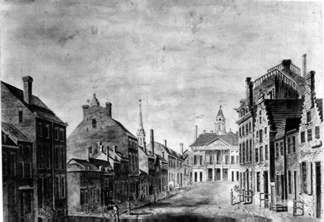Panic of 1819

A combination of bad banking practices; too much land speculation and competition from Europe caused the United States to enter its first economic depression.
From 1815 to 1818, the global price of cotton surged, leading to a boom in the American economy, particularly in the southern states where cotton was a major crop. This boom was not limited to cotton alone; it spurred increased speculation in various sectors, most notably in land. Investors and farmers alike rushed to acquire more land for cotton cultivation, driven by the lucrative returns it promised. This period saw a significant expansion of agricultural land, fueled by the optimism surrounding the cotton industry.
However, in 1819, this economic bubble burst as the price of cotton dramatically dropped on the international market. The reasons for this decline were multifaceted, including overproduction, fluctuating demand in European markets, and international trade policies. The sudden decrease in cotton prices had a domino effect on land values. Land, which had been overvalued during the speculative boom, saw its prices plummet by nearly 50% overnight. This collapse was not gradual but rather an abrupt and shocking adjustment to the new economic reality.
 >
>